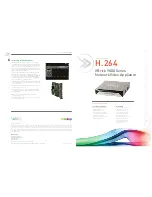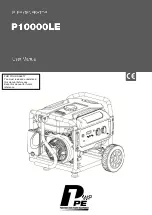
7
e
Bipolare HF-Verfahren anwenden.
e
HF-Neutralelektroden nahe am OP-Feld
anbringen.
e
Den Demand-Schrittmacher auf Festfrequenz
einstellen.
e
Sicherstellen, dass der Herz-Schrittmacher
nicht mit der HF-Elektrode in Kontakt kommt.
e
Einen einsatzfähigen Defibrillator griffbereit
halten.
e
Eine postoperative Herz-Schrittmacher-
Kontrolle durchführen.
2. 4. 3 Gefahrlose Lagerung des
Patienten
e
Den Patienten so lagern, dass er keine
Metallteile berührt, die geerdet sind oder
beträchtliche Kapazität gegen Erde haben
(z. B. Operationstischhalterungen). Bei Bedarf
antistatische Tücher zwischen Patient und
Unterlage legen.
e
Sicherstellen, dass der Patient keine feuchten
Tücher oder Unterlagen berührt.
e
Antistatische Tücher zwischen Bereiche mit
starker Schweißabsonderung und Haut-an-
Haut-Berührungen am Körperstamm legen.
e
Eine geeignete Auflagefläche sicherstellen, um
Drucknekrosen zu verhindern.
e
Urin über den Katheter ableiten.
2. 4. 4 Korrekter Anschluss des HF-Geräts
e
Das HF-Gerät immer über den
Potentialausgleichsanschluss erden.
Außerdem die Anforderungen aus Kapitel 8.6.7
der IEC 60601-1 zu Medizinisch Elektrischen
Systemen beachten.
1
Das Gerät ist mit einer Potentialausgleichs-
buchse ausgestattet, die über eine
Potential ausgleichsleitung mit einem
Potentialausgleichsanschluss im Aufstellungsraum
verbunden werden muss. Durch diese Maßnahme
des zusätzlichen Potentialausgleichs werden
alle leitfähigen Teile in der Patientenumgebung
elektrisch untereinander verbunden und auch
kleine Berührungsspannungen ausgeglichen.
Sicherheit
Seguridad
e
Aplique procedimientos bipolares de AF.
e
Coloque los electrodos neutros de AF cerca del
campo operatorio.
e
Ajuste el marcapasos a demanda a frecuencia
fija.
e
Asegúrese de que el marcapasos cardíaco no
entra en contacto con el electrodo de AF.
e
Tenga siempre a mano un desfibrilador listo
para el uso.
e
Efectúe un control postoperatorio del
marcapasos.
2. 4. 3 Posicionamiento seguro del
paciente
e
Posicione al paciente de modo tal, que no
toque ninguna pieza metálica conectada a
tierra o con una considerable capacitancia
a tierra (p. ej., los soportes de la mesa del
quirófano). Si es necesario, coloque paños
antiestáticos entre el paciente y la base.
e
Asegúrese de que el paciente no entra en
contacto con ningún paño o base húmedos.
e
Coloque paños antiestáticos entre zonas
con una segregación intensa de sudor y con
contacto piel con piel sobre el tronco.
e
Asegúrese de que la superficie de apoyo sea
apropiada, para evitar necrosis por presión
e
Evacúe la orina a través del catéter.
2. 4. 4 Conexión correcta del aparato de AF
e
Conecte siempre el aparato de AF a tierra a
través de la conexión equipotencial. Además,
observe los requisitos del capítulo 8.6.7 de la
CEI 60601-1 respecto a sistemas electromédicos.
1
El aparato está provisto de una toma de
conexión equipotencial, la cual tiene que
conectarse
con la conexión equipotencial de la sala mediante
un cable de conexión equipotencial con enchufe
previsto a este efecto. A través de esta medida de
conexión equipotencial adicional se interconectan
eléctricamente todas las piezas conductoras en
el entorno del paciente y se compensan incluso
Safety
e
Use bipolar HF methods.
e
Attach the HF neutral electrodes close to the
operating field.
e
Set the demand pacemaker to a fixed
frequency.
e
Ensure that the pacemaker does not come into
contact with the HF electrode.
e
Keep a fully operational defibrillator within
reach.
e
Carry out a postoperative pacemaker check.
2. 4. 3 Hazard-free patient positioning
e
Position patients so that they are not touching
any metal parts that are grounded or have
considerable capacitance relative to ground
(e.g. operating table brackets). If necessary,
place anti-static cloths between the patient and
the underlay.
e
Ensure that the patient does not touch any wet
clothes or underlay.
e
Place anti-static cloths between areas with
heavy sweating and skin-to-skin contact areas
on the patient’s torso.
e
Ensure that the patient is resting on a suitable
surface in order to prevent pressure necrosis.
e
Drain urine via a catheter.
2. 4. 4 Correct connection of the HF device
e
Always ground the HF device via the potential
equalization connector.
Also observe the requirements in section 8.6.7
of IEC 60601-1 regarding medical electrical
systems.
1
The device features a potential equalization
connector which
must be connected via a potential equalization
line with a connector in the room where it is set
up. This additional potential equalization measure
means that all conductive parts in the vicinity of
the patient are connected electrically to each other
and small contact voltages are compensated.














































